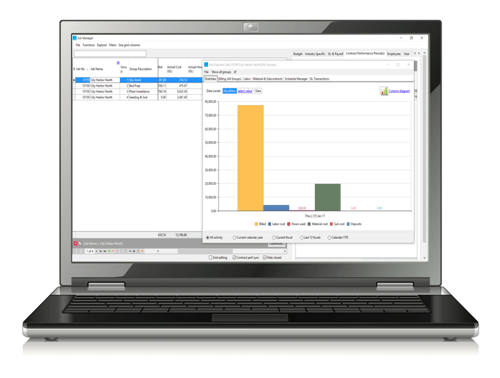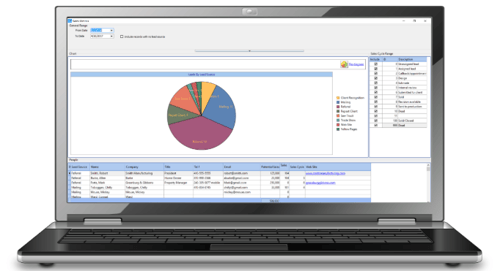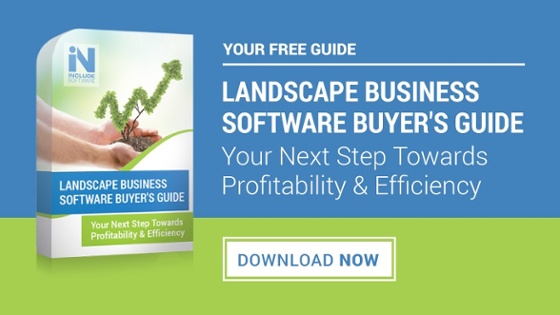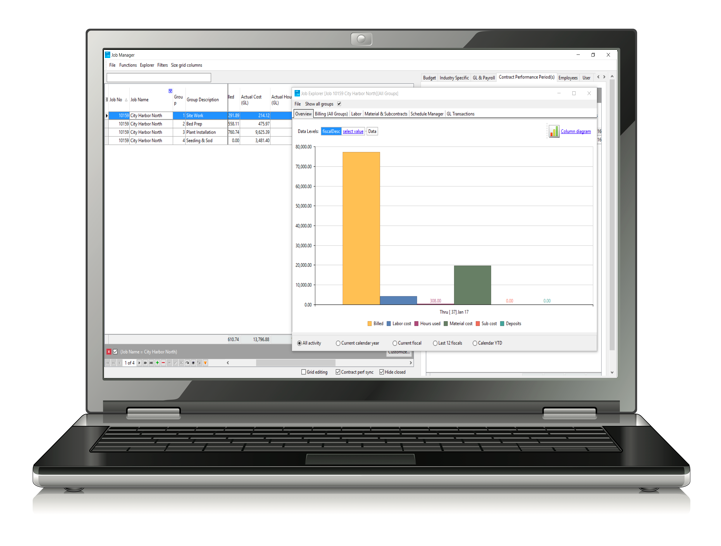Successful sales are driven by metrics. As a salesperson, you recognize that numbers are everything. Whether sales are up or down is the heart of what it is that you do as a landscaping sales manager. The fact is, you could have an amazing sales team but if you aren’t staying on top of how your jobs are performing, as well as what’s coming into the pipeline, then things can quickly start to go awry.
Of course, knowing what to track and how to track it is a key part of the process. We know that data can be overwhelming, but as long as you’re looking at the right numbers in an efficient way, it can go a long way in driving sales success.
Here are the metrics that you should be reviewing weekly in order to crush your landscaping company growth goals.
1. Job Costing
 First and foremost, you need to keep good track of how your already-sold jobs are faring. If you fail to actively perform job costing, you can quickly start to lose sight of your profitability.
First and foremost, you need to keep good track of how your already-sold jobs are faring. If you fail to actively perform job costing, you can quickly start to lose sight of your profitability.
You need to have a finger on the pulse of how your jobs are performing in order to ensure that you’re hitting your target.
For landscaping businesses, there are 5 main cost categories that you should be tracking to produce accurate job costing data.
These include the following.
- Materials
- Labor
- Equipment
- Subcontractors
- Overhead
By calculating this data, you can know which of your jobs are winning and which are losing and make changes where they’re needed. Job costing can also help provide crews with measurable goals to help keep them on target.
2. Leads
Of course, besides keeping track of your sold jobs (already in progress), you also want to make sure that you’re continually pushing new jobs into the pipeline. As a landscaping sales manager, it’s important that you know what’s coming in as part of a sales tracking process.
Some of the metrics that are helpful to track with your incoming leads include the following.
- Prospect’s information
- How the prospect found you
- Date of contact
- Services requested
- Outcome
More specifically, you want to track qualified leads, since not all leads are desirable. Understanding whether or not a lead has real value or not is something that should be honed in order to make better business decisions moving forward.
This data can help with the overall sales process as you start targeting more of those qualified leads and find ways to stop wasting time with leads that aren’t going to be profitable.
3. Your Lead Conversion Rate
Since your goal is ultimately to transform leads into jobs, you’ll also want to stay on top of your conversion rate. Some also call this their “win rate.” This is a measurement of how many leads actually became your customers and it’s an important metric in terms of keeping new sales actively coming in.
By keeping track of your lead conversion rate, you can start to determine what assisted in the lead turning into a client. This is incredibly valuable information that can help guide your future sales (and marketing) process. The lead conversion rate is generally considered where marketing and sales intersect as it’s your marketing efforts that should ultimately bring in those leads, which sales will (ideally) transition into clients. Looking at all of your data regarding this process can help both marketing and sales ensure that their process is aligned.
4. Tracking Existing Work
 As a landscaping sales manager, you know that staying on top of your existing clients is also really important. It can be easy to get caught up in new leads and lose sight of your existing client base, but there are great opportunities for new sales there, as well. Plus, simply keeping existing clientele happy is an essential part of doing business. It is your (satisfied) existing client base that is likely to recommend your business to others and review you on online sites, both of which can contribute greatly to future sales success.
As a landscaping sales manager, you know that staying on top of your existing clients is also really important. It can be easy to get caught up in new leads and lose sight of your existing client base, but there are great opportunities for new sales there, as well. Plus, simply keeping existing clientele happy is an essential part of doing business. It is your (satisfied) existing client base that is likely to recommend your business to others and review you on online sites, both of which can contribute greatly to future sales success.
We already mentioned that tracking “jobs in progress” via job costing is important. That’s a task that will help you ensure that a current job is on track to remain profitable.
But, you should also keep track of existing client work (that’s already been done or may be a repeat service) and look for opportunities for enhancement work.
In fact, it’s not uncommon that a client may suggest work that they’re considering for the future. But if you don’t track this, you’ll forget to bring it back up when the time comes. For example, if a client tells you in the fall that they will probably be interested in spring enhancement services, you should be following up with them as spring approaches. You can keep track of that data by entering it into your landscape business software. You can even set a reminder of when to follow up with that client to make the sale.
In addition, simply making sure that everything is “as it should be” on your existing clients’ properties each week is really important in terms of keeping your client base happy.
A happy client could lead to future sales, so this is important.
Make sure that when you’re tracking existing work that you are also including details such as the scope of work and the budget. The more detailed you can be regarding your accounts, the better.
Making it Manageable
 We know that we don’t have to convince you of the importance of using metrics to guide your sales process. You already know the power of that data! But what you make be struggling with is ensuring that it’s all manageable. After all, data can be overwhelming and it’s not helpful to you if it’s not quickly and easily digestible.
We know that we don’t have to convince you of the importance of using metrics to guide your sales process. You already know the power of that data! But what you make be struggling with is ensuring that it’s all manageable. After all, data can be overwhelming and it’s not helpful to you if it’s not quickly and easily digestible.
If you’re still trying to analyze data using QuickBooks and spreadsheets, then you are probably already aware there are better ways. The fact is, only a robust and comprehensive software solution can help digest everything that it is you need to be at your best.
Asset can offer you the tools that you need to crush your sales goals.
In fact, with the introduction of our iKPI (Include Key Performance Indicator) tool, you now have access to visual reporting capabilities that allow you to look at a dashboard and make quick, data-driven decisions. As a landscaping sales manager, you’re too busy to spend hours crunching numbers. You want answers quickly so that you can keep pushing sales through your sales funnel. With Asset, that’s exactly what you can have—data at your fingertips, ready to use.
If you’re ready to see how landscape business software, with the help of a dashboard tool, can help you stay on top of sales goals, let’s explore and see what our products can do for you.



